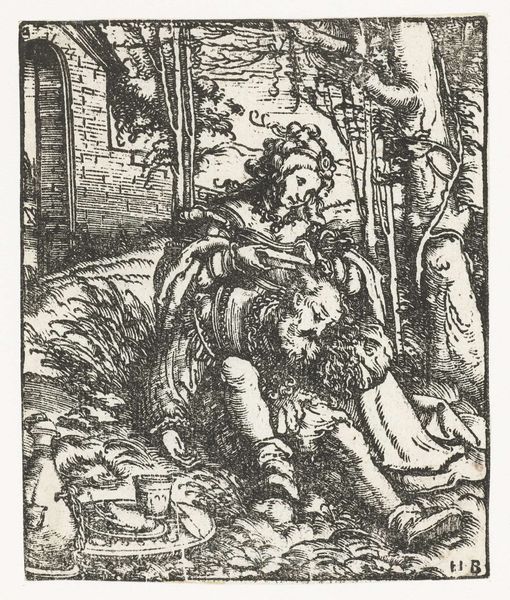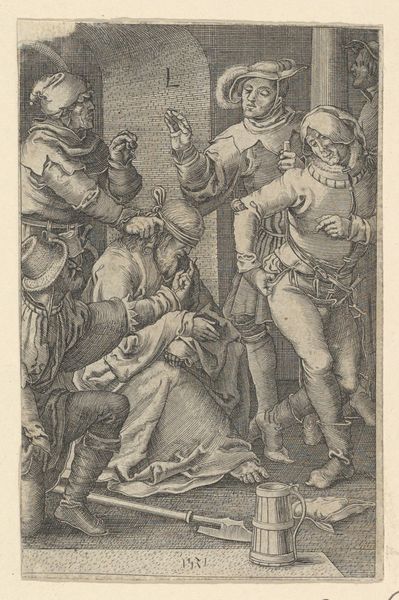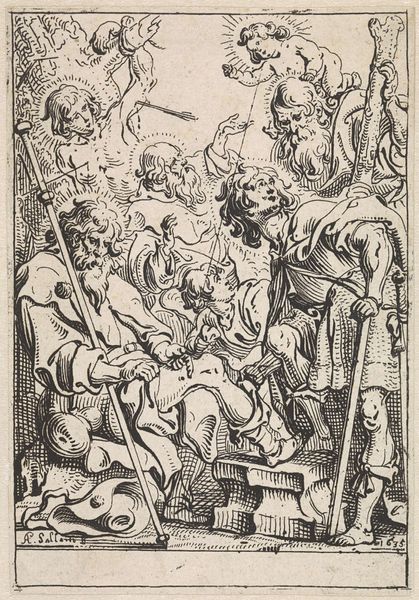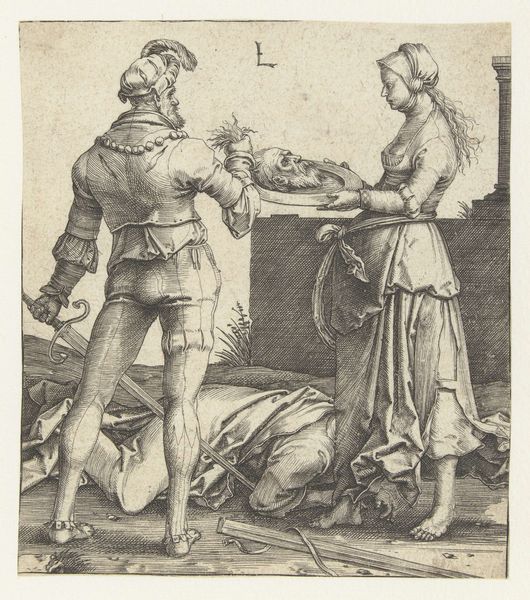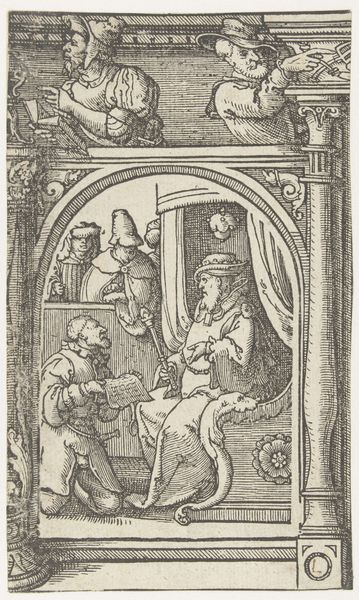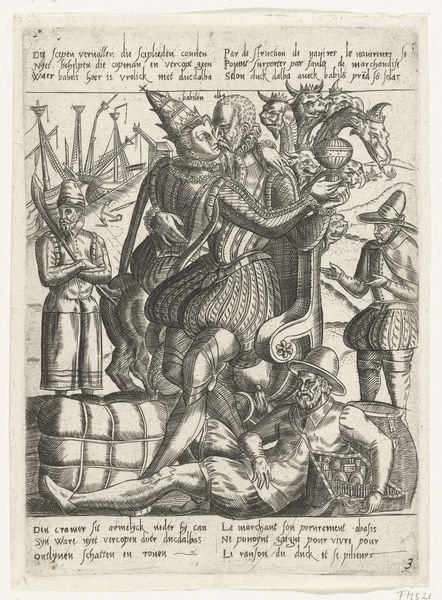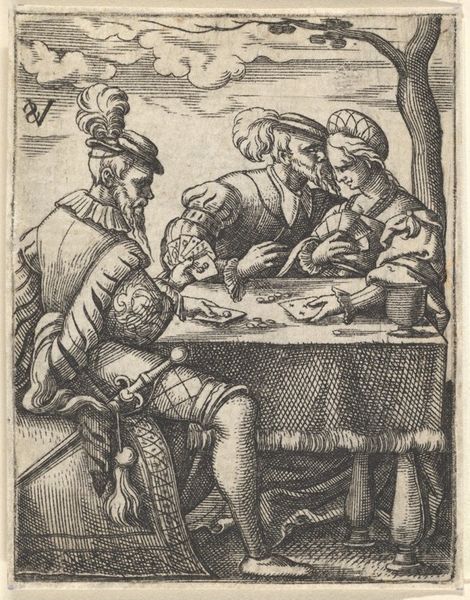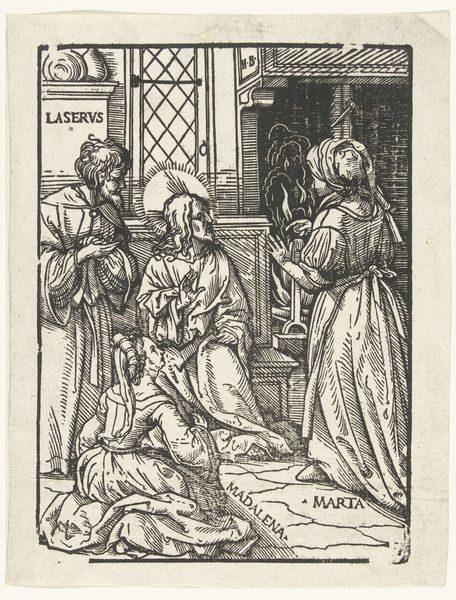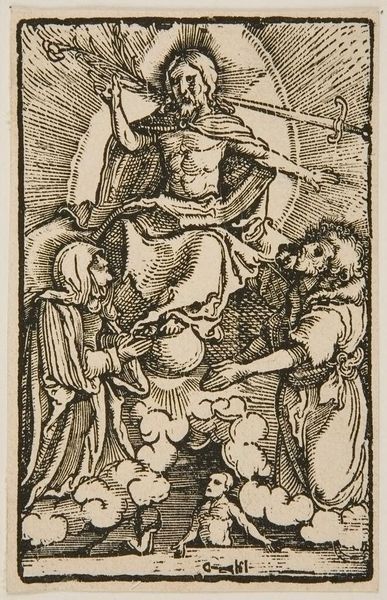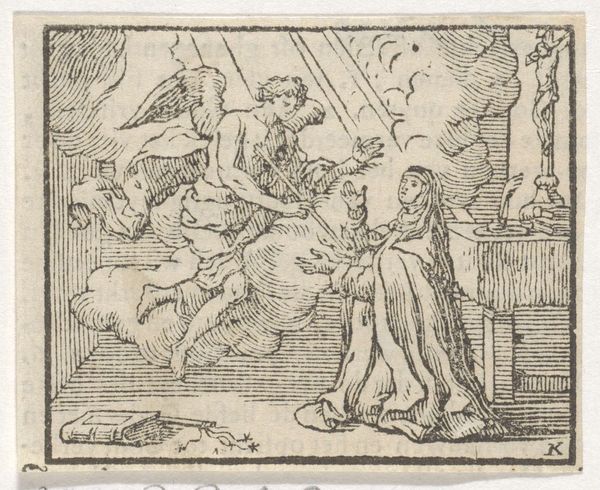
drawing, ink
#
drawing
#
allegory
#
narrative-art
#
pen drawing
#
ink
#
northern-renaissance
Dimensions: height 157 mm, width 117 mm
Copyright: Rijks Museum: Open Domain
Curator: Today, we’re looking at Albrecht Dürer’s ink drawing, "Job on the Dunghill," created in 1509. Editor: Well, my initial reaction is discomfort. It's stark. The detail is so precise, but it only adds to the sense of suffering radiating from the central figure. He looks utterly defeated. Curator: It's definitely a raw depiction of pain. The drawing illustrates a scene from the Book of Job, showing Job afflicted with sores and sitting on a dunghill, enduring profound misery. Dürer’s interpretation here gives visual form to the social commentary on suffering and injustice during that era. The history suggests that at that time poverty and sickness was often interpreted as devine punishement. Editor: Exactly! It becomes a social mirror reflecting the power dynamics between wealth, health and the so-called sins that were ascribed to those in positions of poverty. Dürer doesn't shy away from showing the complexity and nuance in religious art, including gender dynamics; there is Job's wife tending to his suffering. She stands at a distance, yet is included within this very human moment of agony. Curator: Notice also, the devil figure lurking at the top left, ready to bring evil, illness, pain to Job with its weapon. That character visually represents the challenges and anxieties the citizens felt back then. Dürer places these deeply impactful narratives at center stage, shaping both religious and moral conversations within the society. Editor: Yes, the visual cues there create this understanding of the era and are key when exploring this work’s modern relevance. The question I think this image leaves me with, who creates and who endures precarity? Does art shape perception? What kind of questions around race, class and access can it generate? It still resonates powerfully today. Curator: It’s certainly a drawing that invites introspection, and it’s interesting how relevant Durer’s historical commentaries on faith and its effect on people remain. Editor: Indeed. The intersectional dimensions of faith, society, and visuality converge and ask: whom does society prioritize when someone falls to hardship?
Comments
No comments
Be the first to comment and join the conversation on the ultimate creative platform.
